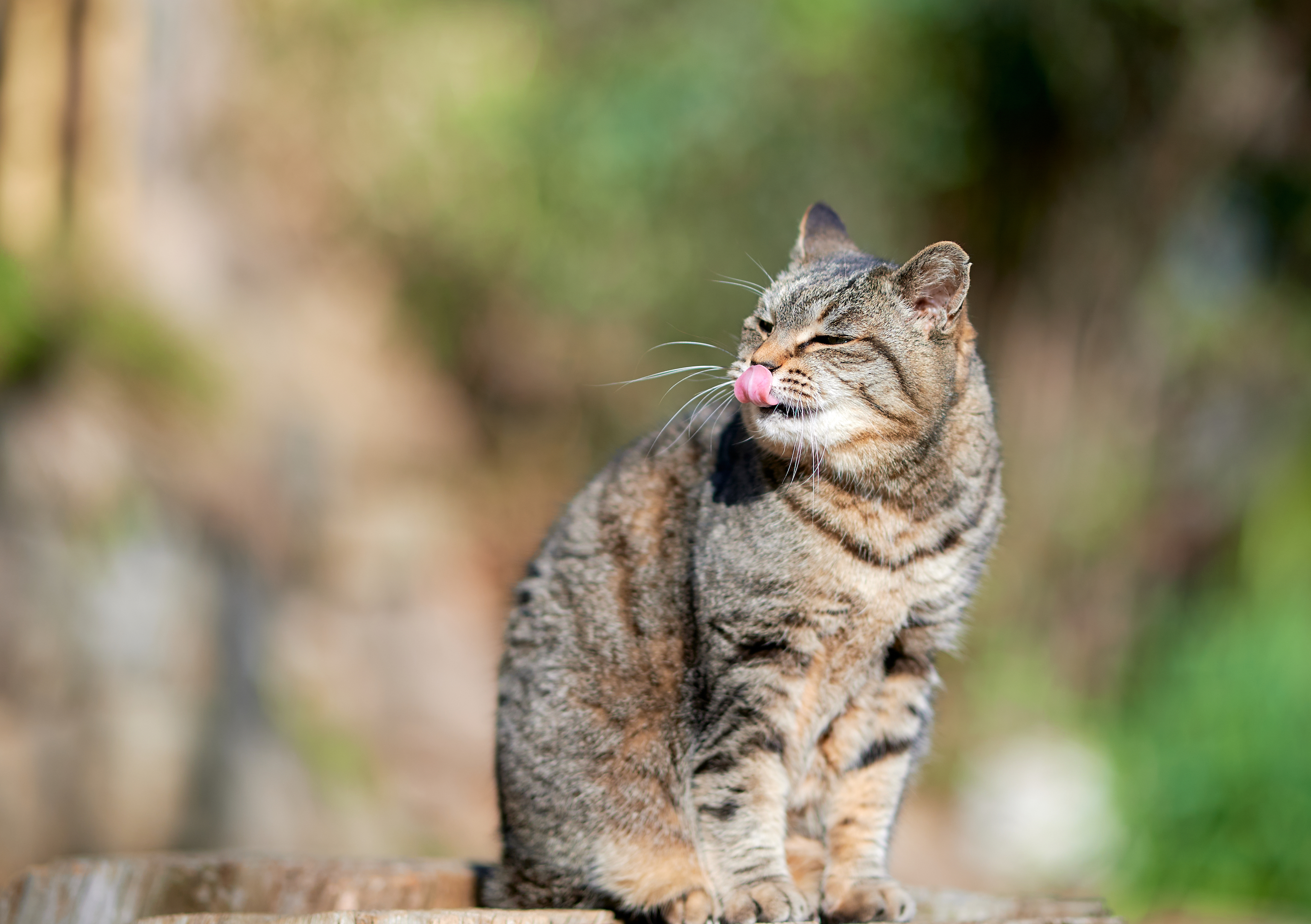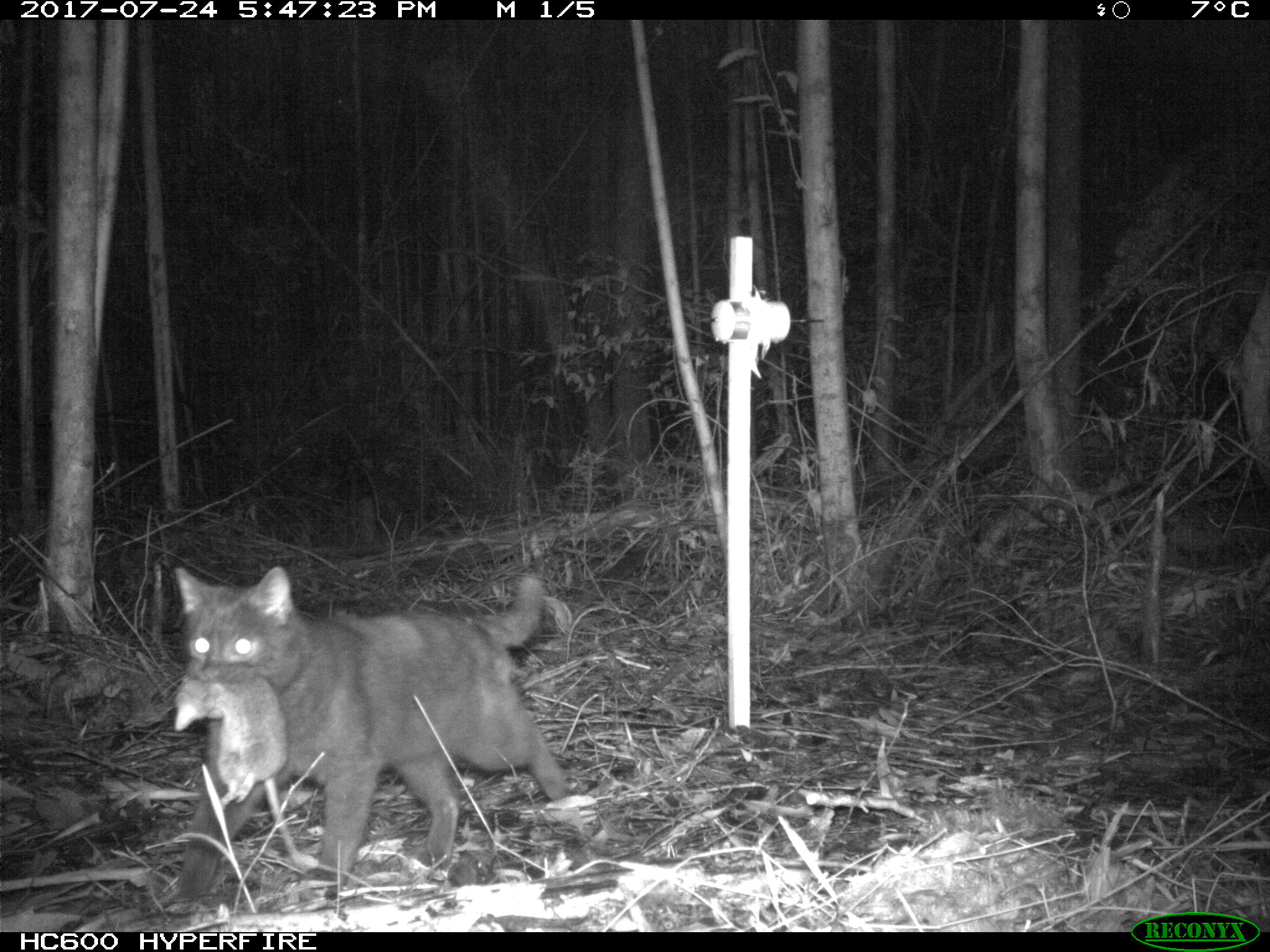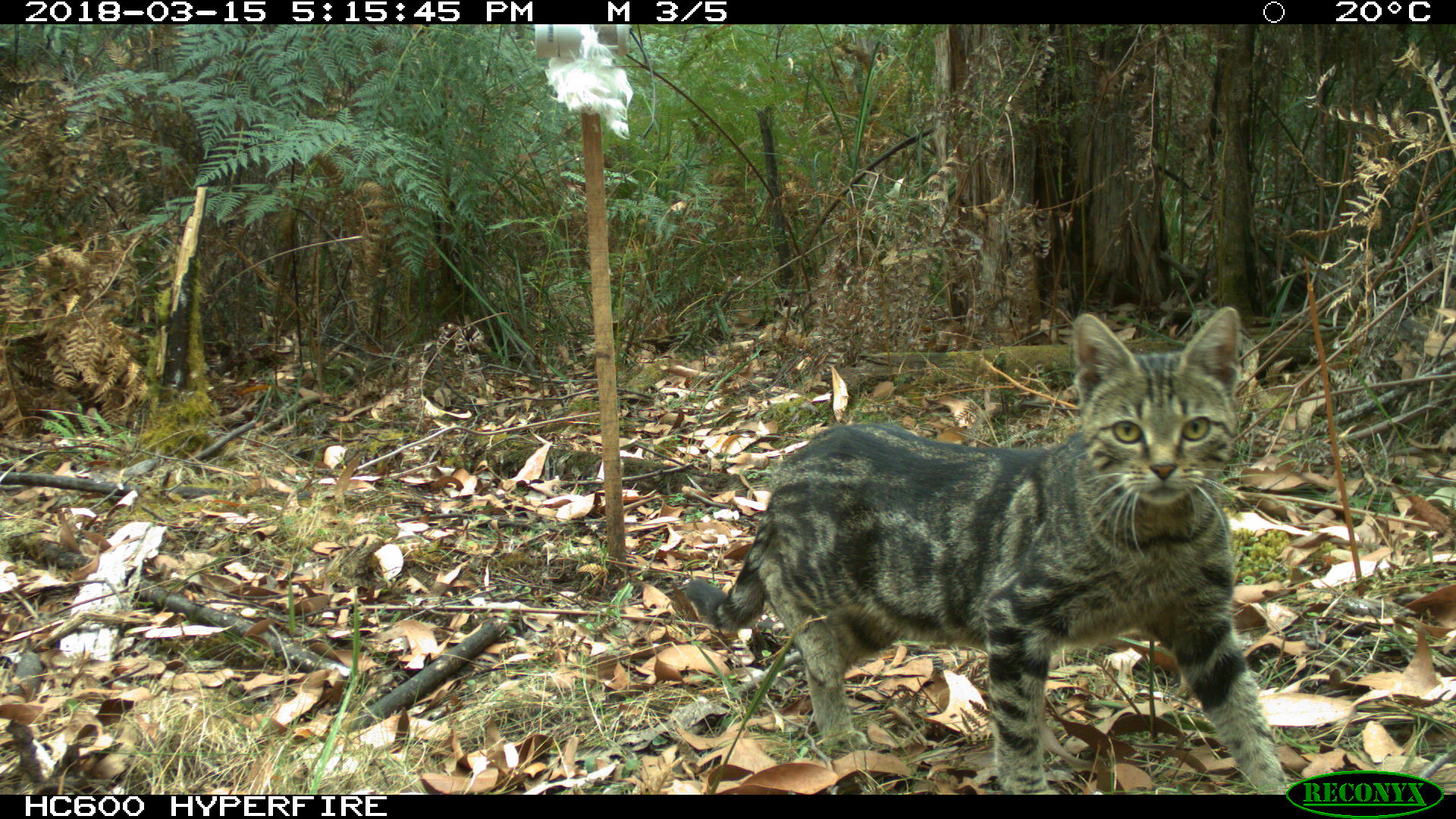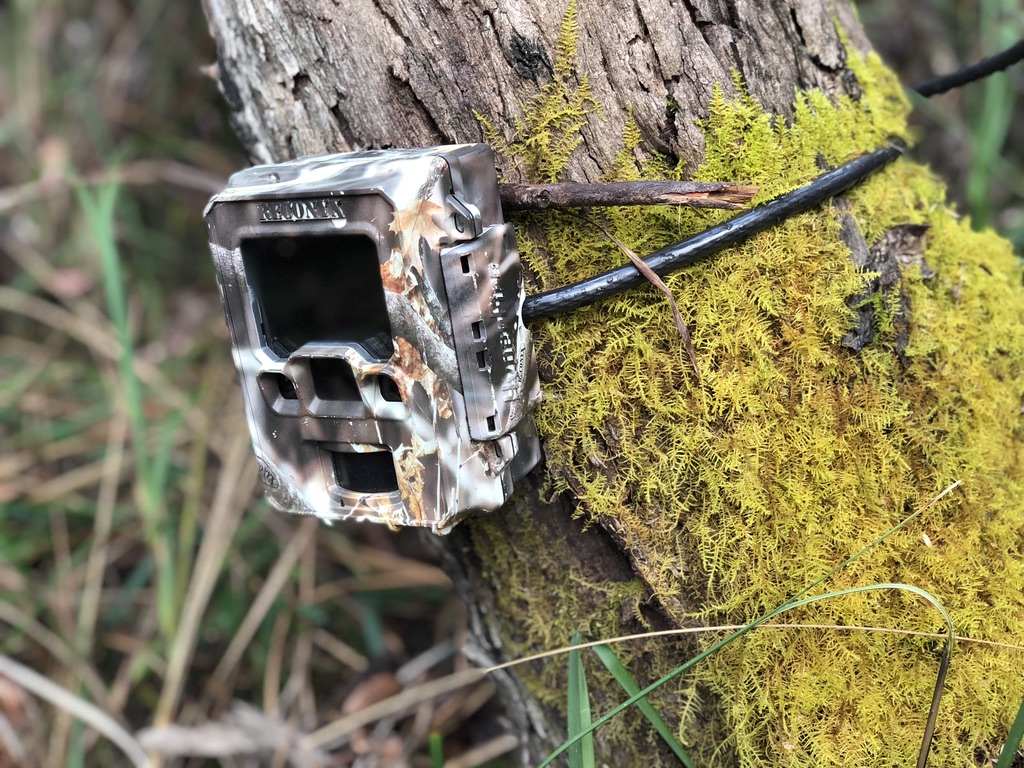
Sciences & Technology
Ever wondered what your pet is thinking?

Students have demonstrated that artificial intelligence can identify individual feral cats in the wild in what could be a step forward in the fight to control them
Published 8 April 2021
At its most basic, Artificial Intelligence (AI) can be considered a computer algorithm that learns as it processes targeted data fed into it, and that data can be anything from language and statistics to pictures and video.
“By comparing thousands of images, or indeed thousands of any other type of object or data, AI is able to identify patterns that assess how good a match an image, or part of an image, is to what the AI algorithm has been trained to recognise,” says Richard Sinnott, Professor of Applied Computing Systems at the University of Melbourne.

The speed and scale at which AI operates means it is revolutionising data analysis whether it be the genetics of different diseases, predicting an election outcome or simply working out whether a tree will grow to interfere with an overhead power line.
Now, Professor Sinnott’s students have demonstrated that AI can be trained to identify individual feral cats in the wild using cat images snapped by motion-sensing camera traps.

Sciences & Technology
Ever wondered what your pet is thinking?
It is a potential game changer for better estimating and eventually controlling Australia’s feral cat populations that are devastating native species.
In June last year a parliamentary inquiry reported that there were an estimated 2.8 million feral cats in Australia, killing some 1.4 billion native animals every year.
About 74 mammal species and sub-species are threatened by feral cats, as well as 40 bird species and 21 reptile species.
These are rough estimates and the scale of the problem may be much bigger. However, a more accurate assessment requires manual counting of individual cats.
Feral cats are among the few species which have unique natural markings - allowing individual identification from photographs.

But, this is generally too daunting a task to contemplate for ecologists on limited budgets. Just ask University of Melbourne Biosciences PhD student, Matthew Rees – he’s been doing it.
“It’s been hell,” says Rees who spent a large proportion of his PhD comparing stripes in different feral cat detections.

Environment
Hope for endangered frogs
“Sometimes you can tell straight away with good quality images and when coat markings are quite distinct. Other times you can easily spend an hour going cross eyed over a couple spots on the front left leg.”
Rees deployed 949 camera traps in the forests of south-west Victoria in a bid to count the numbers of feral cats in the area, but spent more time in the office trawling over some 20,000 feral cat images than he ever did in the field.
But counting cats is worthwhile. Rees’ data has shown there are approximately three times more cats in the Otway Ranges region than previously thought, suggesting we may be underestimating the number and impact of feral cats in similar environments across Australia.
This would have important implications for managing feral cat populations, however, scaling up this manual counting just isn’t feasible.
That is when he contacted Professor Sinnott who is always on the look out for projects for his students, and increasingly they are doing projects for other university researchers.
They have used AI to interpret pollution data, estimate crowd sizes, make stock market predictions, classify plants, spiders, snakes and even clouds, as well to try to read emotions in cats and dogs.

Sciences & Technology
The ‘personality’ in artificial intelligence
They are looking at whether AI can identify lameness in race horses, read pain in cats and even track the in-game performance of AFL footballers for kicks, marks, passes.
Professor Sinnott put three students on the job – Jingling Zhou, Shiyu Wang and Yunxue Chen, giving them the task to train an AI program well enough to replicate Rees’ own work. The students used algorithms called Convolutional Neural Networks (CNN).
In all, Rees had identified 93 individual feral cats (not including significant numbers of black cats that were impossible to distinguish) across some 4,000 images that the AI would need to be trained to recognise. But there were two problems:
First the quality of the images was often poor. Most photographs were taken of moving feral cats, at night with an infrared flash – often resulting in blurry photos. For some individual cats the images were so bad or so few that in the end the AI could only be trained on 75 individual cats.

Second, there were only 10-50 photos of each cat, which just wasn’t enough to adequately train the AI given both the poor quality of the photos and the need to identify cats individually.
“These algorithms need to be trained on lots and lots of data, the more the better, and we just had too few images and some of the images were less than optimal, so the student had to be clever and augment the number of images,” says Professor Sinnott.

Sciences & Technology
One size doesn’t fit all for conserving our iconic kangaroos
One approach was to simply to flip the images, forcing the AI to “look” at the image at a different angle as shown below. It was a simple way to dramatically increase the number of images the AI could train on.
They further bolstered the data by using images of regular cats from sources like Google Image Net and Microsoft’s COCO.
The students spent three months on the project, and used the University’s Spartan High Performance Computing system. The AI managed to achieve 75 per cent accuracy for the Otways sample and generally over 90 per cent accuracy for the smaller sample from Glenelg further west.
“These are really impressive results for what is the first iteration of a small student project, and really demonstrates the potential here,” says Professor Sinnott.

Rees has since collected nearly twice the number of cat images and identified 44 new individual cats from the same area. Professor Sinnott has brought a new PhD student onboard, Zihan Yang, to further developing these AI models.
They are also exploring AI challenges with limited data and making the models run on low memory devices, like on the camera traps themselves.

Sciences & Technology
The danger of surveillance tech post COVID-19
While any fully developed program wouldn’t replace the need for a scientist to go through data identifying cats, it would speed up the process substantially since researchers could focus on images where the AI is unsure.
An unsure reading would signal that the image may be a new, previously unidentified cat that the researcher needs to take a closer look at.
The AI would also provide a “second pair of eyes” for scientists to validate their findings.
“An accurate AI program isn’t going to replace researchers doing this work, but it will go a long way to making this work feasible at scale,” says Rees.
“And that is key, because the only reliable way to know how many cats are out there is to count each cat that we can.”
Banner: Getty Images